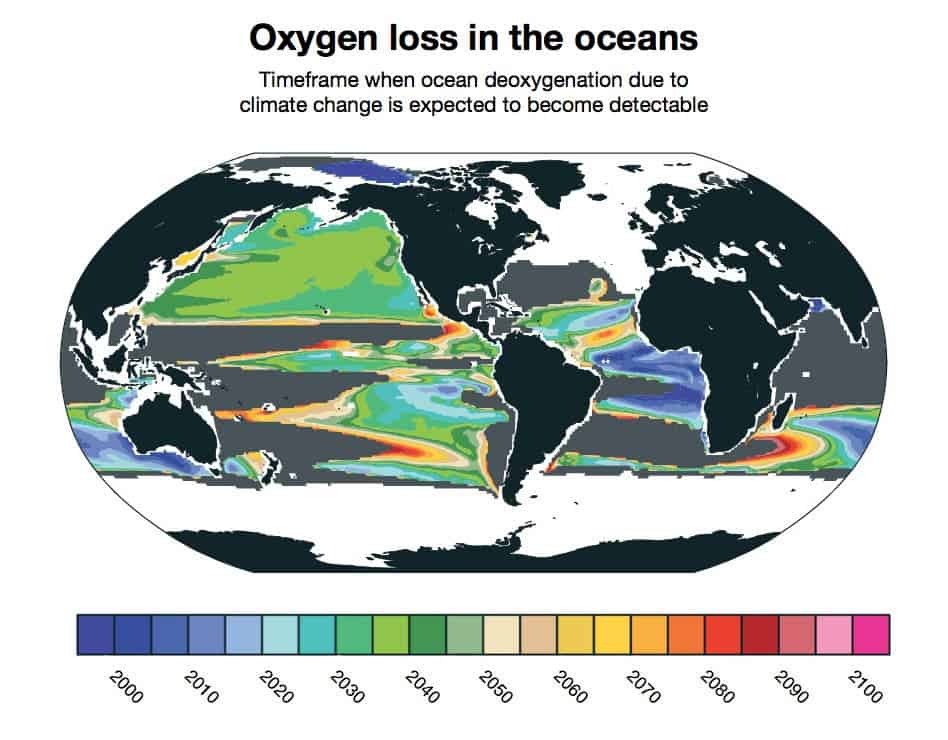Climate change is posing a trident of threats for marine life: acidification (lowering pH), rising temperatures and decreased oxygen levels. Concerning oxygen depletion, this happens naturally mostly around coasts and shallow waters. Now, scientists have also quantified the effects of climate change as they relate to oxygen depletion. Their analysis suggests that by 2030 oxygen dissolved due to climate change will overpower the natural variability in the ocean, putting further stress on marine life.

Though most marine species can’t breathe air, they unanimously rely on oxygen to survive. Without oxygen, metabolic processes can’t access nutrients nor can they cycle waste.
Oxygen gets into the water when Oxygen from the atmosphere dissolves and mixes into the water’s surface. Oxygen levels are falling throughout the world’s oceans due to rising temperatures at the oceans’ surface and winds, and the decline is expected to have the greatest impact on biodiversity in the eastern Pacific Ocean, say researchers at the National Center for Atmospheric Research (NCAR).
Using a model called Community Earth System Model, the NCAR researchers ran dozens of times minuscule variations in air temperature from 1920 to 2100. These tiny differences grew and expanded with each run.

These models gave researchers an idea of how much the oxygen concentration varied naturally in the past, but also helped predict how deoxygenation in the ocean will vary due to climate change. Already, deoxygenation mainly caused by climate change can be seen in the southern Indian Ocean, as well as in some parts of the Pacific and Atlantic basins.
By 2030 to 2040, widespread detection of deoxygenation across the world’s oceans should be detected. In some parts of the east coasts of Africa, Australia, and Southeast Asia, deoxygenation caused by climate change was not evident even by 2100.
Without oxygen, life is slow or threatened with death. Fishermen often find dead marine life like squids or crabs around pockets of waters void of oxygen. This will only happen more often in the coming decades and at a greater scale.
Findings appeared in the journal Global Biogeochemical Cycles.






